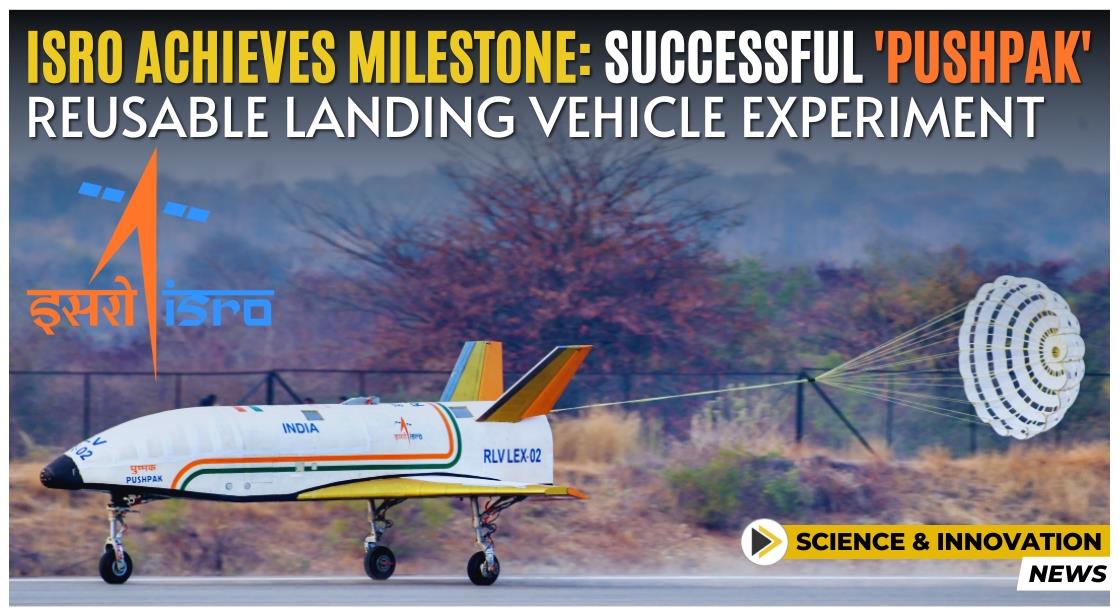ISRO Achieves Milestone: Successful 'Pushpak' Reusable Landing Vehicle Experiment

News Synopsis
Indian Space Research Organisation (ISRO) conducted the Pushpak Reusable Landing Vehicle (RLV) LEX 02 landing experiment at the Aeronautical Test Range in Chitradurga on March 22, 2024.
This marks a significant achievement for ISRO in advancing its reusable spacecraft technology.
RLV LEX 02 Experiment:
-
The RLV LEX 02 landing experiment is the second in a series conducted by the Indian Space Research Organisation (ISRO), following the RLV-LEX-01 mission completed the previous year.
-
It aims to demonstrate the autonomous landing capability of the RLV under off-nominal initial conditions.
Test Details:
-
The experiment was carried out at 7.10 am on March 22, 2024.
-
The Pushpak (RLV-TD), a winged vehicle, was released from an off-nominal position and autonomously landed with precision on the runway.
Chinook Helicopter Release:
-
The Pushpak was lifted by an Indian Air Force Chinook Helicopter and released from a height of 4.5 km.
-
It moved automatically toward the runway, corrected for cross-range, and made a crisp landing.
Autonomous Landing:
-
Pushpak landed on the runway using its brake parachute landing gear brakes and nose wheel steering system.
-
The mission successfully simulated high-speed landing conditions of RLV returning from space.
Technological Advancements:
-
ISRO's Vikram Sarabhai Space Centre (VSSC) Director, Dr. S Unnikrishnan Nair, highlighted the mastery of terminal phase maneuvering, landing, and energy management in fully autonomous mode.
-
The success of this mission revalidates indigenously developed technologies in navigation, control systems, landing gear, and deceleration systems essential for high-speed autonomous landings.
Hardware Reuse:
-
Following approval and clearance, the RLV-LEX-02 mission made use of the same flight hardware and systems as the RLV-LEX-01 mission.
-
In order to withstand greater landing weights, the airframe structure and landing gear were strengthened based on observations from RLV-LEX-01.
Future Implications:
-
This success is a critical step towards future Orbital Re-entry missions, showcasing ISRO's capabilities in space exploration and technology development.
-
The ability to reuse flight hardware and systems demonstrates ISRO's commitment to efficiency and sustainability in space missions.
You May Like









